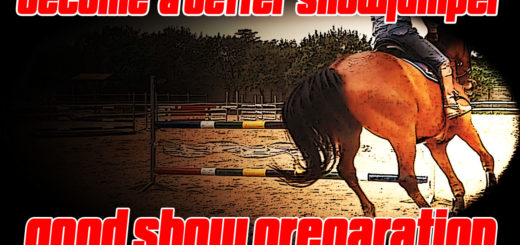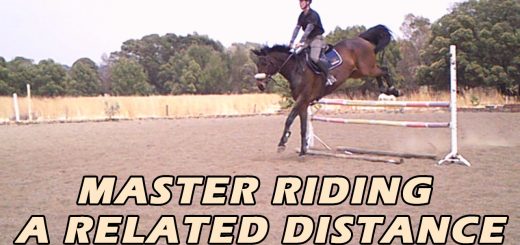Saddle Fitting – does your saddle fit your horse?
Saddle fitting is something you should be certain of. You really need to take particular care in checking that your saddle fits your horse well. An ill-fitting saddle can be extremely uncomfortable for your horse, as well as have a negative impact on his performance. Go through this 5 point checklist to see if there are any problems with the way your saddle fit.
Saddle fitting – part one
Saddle fitting – part two
Saddle fitting basics explained
Saddle fitting is an extremely important topic, and you should be super diligent about making sure your saddle fits well. I have literally seen horses completely transform in front of my eyes. Just by putting a saddle that fits them well on their backs. Both from a performance perspective and from a behaviour perspective.
With regard to performance, your horse simply cannot perform at his best if his saddle doesn’t fit well. It’s that simple. You may only be seeing a fraction of your horse’s ability, just because his saddle doesn’t fit him well. And as far as behaviour is concerned, countless behaviour problems can be traced back to a poorly fitting saddle. Try and imagine going for a run in a pair of shoes that is two sizes too small. Now do this day in and day out over a few months. You’re gonna be getting a bit grumpy. Well, the same could apply to your horse. So if you love your horse, make sure he’s nice and comfortable.
1: Width
For starters, you want to find the end of your horse’s shoulder blade. To do this, you run your hand over the horse’s shoulder and feel where it drops off. Now I’ll mark this off, and then you can trace his shoulder blade with your finger. So you now have a good idea of where your horse’s shoulder blade is when it moves backwards and forwards. Now it’s extremely important to keep this area clear. If your saddle is blocking his shoulder movement you restrict his stride length and freedom of movement. This prevents him from jumping nice and freely, with a good jumping technique over the jump. It’s pretty uncomfortable as well.
Now a lot of people make the mistake of riding with their saddle placed too far forward. This automatically blocks their shoulder movement regardless of how the saddle fits. So you want to make sure the saddle is sitting behind your horse’s shoulder blade.
When you’re sitting on your horse you should be able to slide your hand under the point of your tree. If it’s really tight, then your saddle is too tight and is blocking your horse’s shoulder.
2: Clearance
The clearance over the wither and spine is crucial. If you don’t have enough clearance over the wither and spine it can be extremely uncomfortable for your horse. I’m not even going to mention performance. So how you check that there is enough clearance is quite simple. Place your saddle on your horse’s back, and you should be able to get 3 fingers between your saddle and the horse’s back. You need to also see clearance all the way through. You also need to be able to get at least one finger on either side of the wither. This will allow your horse to bend without the saddle catching him.
3: Ballance
So now onto your saddle balance. This will affect you as well as your horse. So when you look at your saddle on your horse’s back, draw an imaginary line from the pommel to the cantel. That line needs to be horizontal. Well as near as damit to horizontal anyway. That way your weight will be positioned in the centre of the saddle. And this will help put you in the correct riding position. You’ll be sitting tall, and your centre of gravity will be perpendicular to the ground.
Now if your pommel is higher than your cantel, this usually means your saddle is too narrow in front. This will move your weight to the back of the saddle. You then put too much pressure on this part of the back. It puts you as the rider behind the perpendicular line and makes you ride in a bit of an armchair position. In other words, with your legs stuck out in front of you.
Now if the cantel is higher than the pommel, this usually means your saddle is too wide in front. This will move your weight to the front of the saddle. And this puts too much pressure on the shoulder and wither area. This will put the rider in front of the perpendicular line. And will make your ride with your shoulder too far forward. You may often find yourself wanting to fall forward onto the horse’s neck. And your lower leg may also feel like it’s sliding back a lot.
So the balance of your saddle is easy to check. It also makes a really big difference to you and your horse.
4: Length
Now onto the length of your saddle. So how you check this is to feel down your horse’s side and find the last rib. Then follow the rib up to your horse’s back. Now it does curve in a bit. And then make a mark on the back. Next place the saddle on his back, making sure it’s behind his shoulder. Then check whether the saddle comes past the line from the last rib. If it does, your saddle is too long for your horse’s back. And if it is, it’ll cause a lot of back problems around the lumbar region.
5: Coverage
You want a nice even weight distribution along the entire length of your saddle. Now a common problem here is what is referred to as bridging. Bridging is basically when the panels of your saddle don’t follow the contours of your horse’s back. This plays out by having the weight-bearing areas in the front and the back of your panels. So it creates a little bridge, hence the term bridging.
So how you check for that is to lift up the sweat flap and slide your hand along the horse’s back and see if you can feel a little bridge with the back of your hand. Now I’ve always found it quite difficult to tell if there’s actually any bridging using this method. Until I stumbled upon quite a nifty little trick recently. I feel gives you a much clearer picture if your saddle is bridging or not
Wet your horse’s back. Then press the saddle down a few times on his back. Now, look at panels to see if the saddle is wet evenly down both panels.





My younger cousin starts her horse-riding classes in a few weeks, and her dad wants to make sure she has all the equipment ready. That’s why I think they’d enjoy reading your article about horse saddles and how to find the best fit for you. Thanks for the advice on how to check a horse’s saddle balance levels before buying one.
Cool!!! Im glad it was helpful Eli